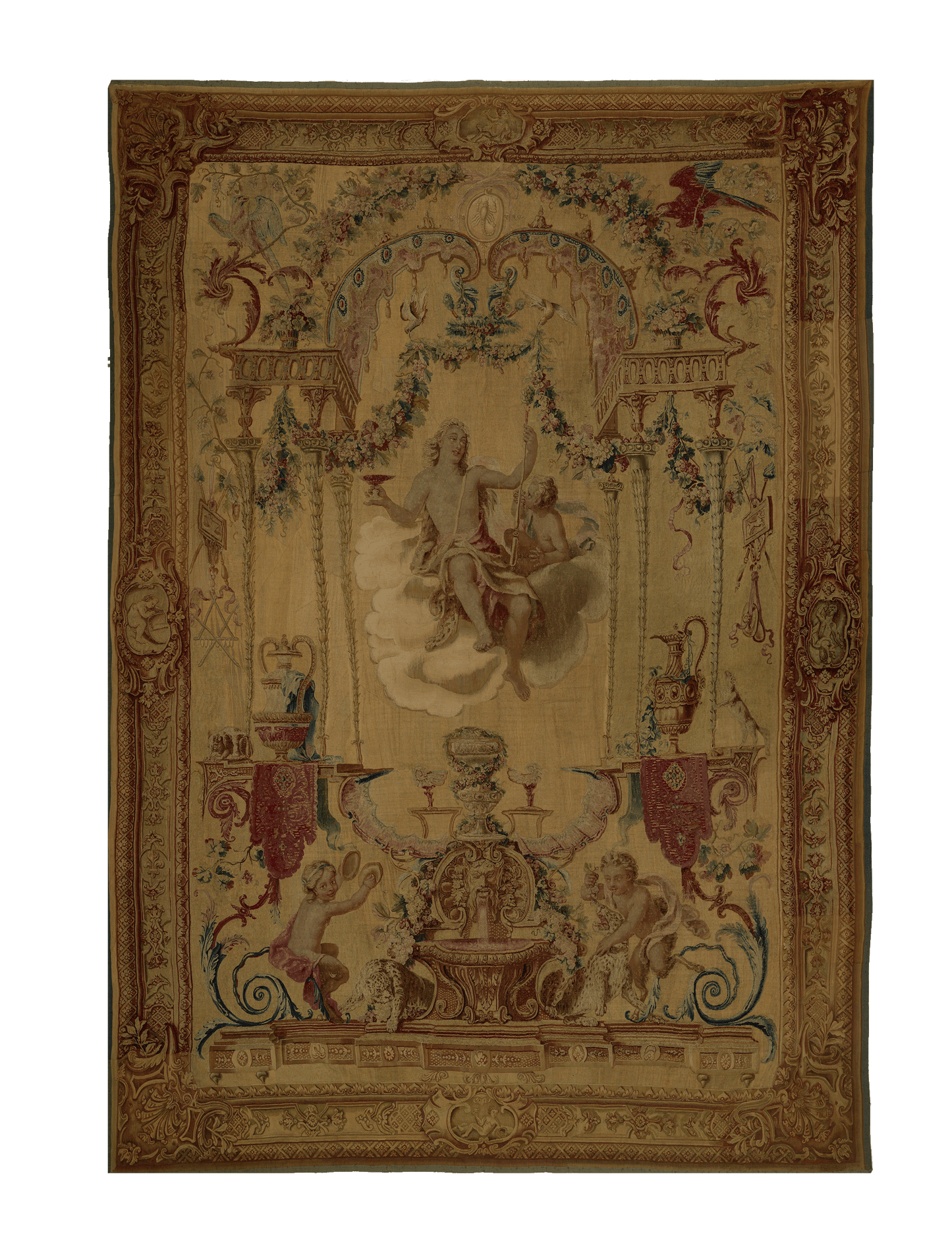Romantic English
The Triumph of Apollo RE168925
The Triumph of Apollo RE168925
Couldn't load pickup availability
This tapestry is a splendid example of the Rococo era's fascination with mythological themes, intricate detail, and the playful elegance that characterized the art and design of the time. Every element is carefully woven to create a harmonious scene that blends classical influences with the lightness and grace so beloved in the 18th century.
Title: "The Triumph of Apollo"
Central Imagery: At the heart of this tapestry, we are greeted by a majestic portrayal of Apollo, the god of the sun, music, and the arts. He is depicted seated on a soft cloud, his figure radiating the effortless grace and divine power associated with this classical deity. Draped in flowing robes, Apollo's posture is both relaxed and commanding, his arm outstretched as if bestowing his blessings upon the world below.
Beside Apollo, a young figure, perhaps a muse or one of the Horae (goddesses of the seasons), attends to him, symbolizing the nurturing of the arts under Apollo's guidance. The duo is framed by an ornate archway of garlands, ribbons, and festoons, which adds a sense of grandeur and celebration to the scene. The arch is adorned with floral arrangements and delicate vines, giving the impression of an outdoor festival or celestial court.
Surrounding Elements: The upper corners of the tapestry feature classical architectural elements, such as balustrades and ornate urns, from which more garlands and floral motifs cascade. These structures, though elaborate, do not overshadow the central figures but rather complement the scene, adding to the overall sense of harmony and balance.
Lower in the composition, we find a detailed depiction of a fountain, symbolic of life, creativity, and perhaps the divine inspiration that flows from Apollo. The fountain is surrounded by playful putti—cherubic figures who are often seen in Rococo art as symbols of innocence and the joys of life. These putti are engaged in lively antics, one holding a tambourine while another appears to be playing with water, adding a sense of movement and lightheartedness to the scene.
Borders and Frame: The tapestry is framed by an elaborate border that mirrors the intricate details of the central scene. The border is richly decorated with scrolling acanthus leaves, floral patterns, and classical motifs that are characteristic of the Rococo style. The corners are highlighted with cartouches that likely feature small scenes or decorative emblems, further enhancing the tapestry's overall elegance.
The color palette is composed of soft, muted tones—warm golds, delicate pinks, and light blues—that give the tapestry a dreamy, ethereal quality. This choice of colors reinforces the theme of divine light and harmony, drawing the viewer into the mythological world it represents.
Symbolism and Style: This tapestry embodies the Rococo ideal of beauty and pleasure, where mythological subjects are depicted not with the solemnity of earlier periods but with a sense of playfulness and charm. Apollo, as the god of the arts, serves as a fitting central figure, symbolizing not only the light and warmth of the sun but also the creative energy that inspires art, music, and poetry.
The lightness of the scene, combined with the intricate details and flowing compositions, reflects the Rococo fascination with movement, curves, and ornamentation. The putti, the garlands, and the fountain all contribute to a sense of endless joy and creativity, as if the tapestry itself were a celebration of life and art.
This tapestry likely hung in a room designed to impress and delight, perhaps in a salon or a private chamber where it would have served as both a decorative element and a statement of the owner's refined taste and appreciation for the arts. Its presence would have brought warmth, light, and a touch of the divine into the space, much like the god it so beautifully portrays.
RE168925
Share


